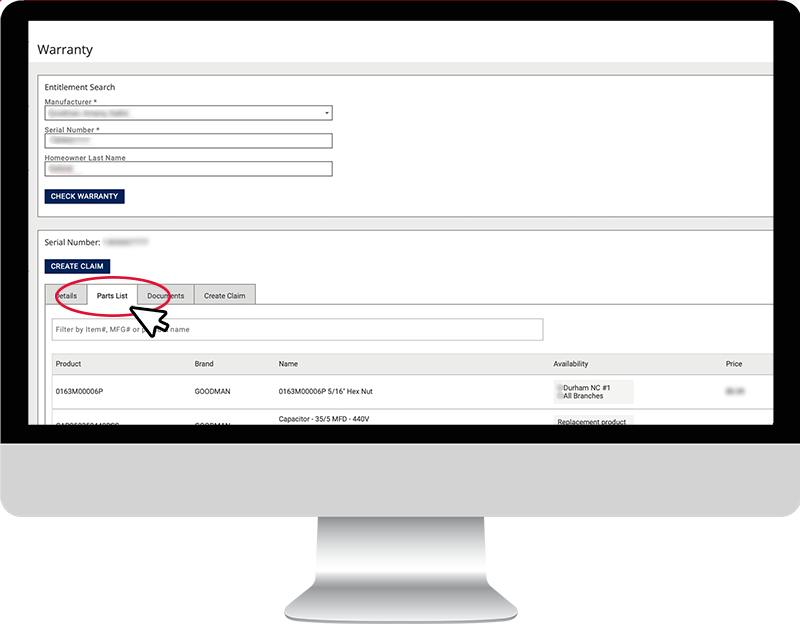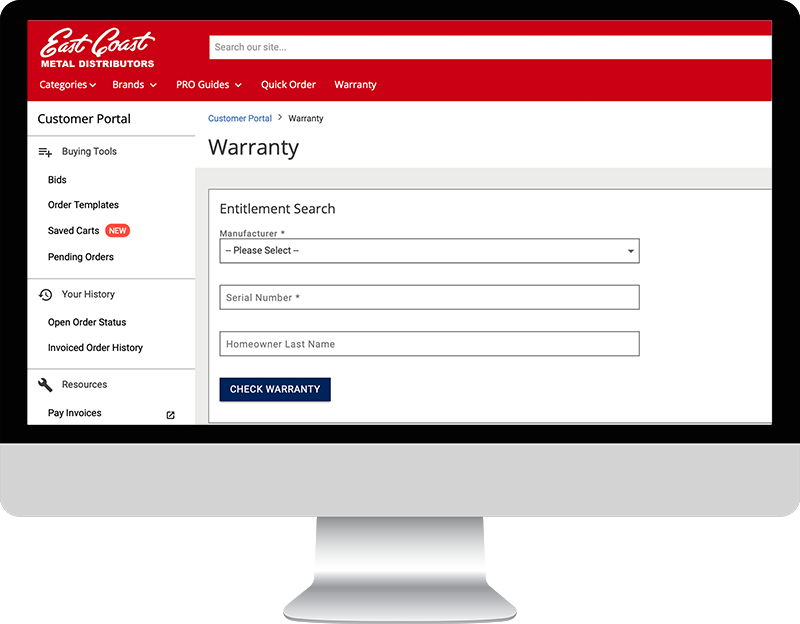Goodman Warranty Lookup Mobile

Understanding your Goodman warranty is crucial for saving money on HVAC repairs. Luckily, Goodman offers several methods for warranty lookup, including convenient mobile options. This guide will walk you through how to find your Goodman warranty information using your phone or tablet, what's covered, and what to do if you need to file a claim. We'll also cover some common issues you might encounter and when it's best to call a professional.
Why is a Goodman Warranty Lookup Important?
Before you dive into any DIY troubleshooting or schedule a service call, knowing your warranty status can save you a significant amount of money. A valid warranty can cover the cost of parts, labor, or even a full unit replacement, depending on the specifics of your policy.
Benefits of Knowing Your Warranty Status:
- Cost Savings: Avoid paying out-of-pocket for covered repairs.
- Peace of Mind: Know what's covered and for how long.
- Informed Decisions: Make better decisions about repairs vs. replacement.
- Proper Documentation: Have the necessary information ready when contacting a service technician or Goodman directly.
How to Perform a Goodman Warranty Lookup (Mobile-Friendly)
Goodman offers several ways to check your warranty information, and many of these are easily accessible from your smartphone or tablet.
Method 1: Goodman's Online Warranty Registration and Lookup Tool
The most direct way to check your Goodman warranty is through their official website. Here's how:
- Locate the Model and Serial Number: This is the most important step. You'll find this information on the unit's nameplate. Typically, it's located on the indoor unit (furnace or air handler) and the outdoor unit (condenser). Look for a sticker or plate that clearly displays the model and serial number. Take a picture with your phone!
- Visit the Goodman Website: Open your mobile browser and go to the official Goodman Manufacturing website. Look for a section dedicated to warranty registration or warranty lookup. It might be under "Support," "Owners," or a similar heading.
- Enter the Required Information: The lookup tool will typically ask for the following:
- Model Number
- Serial Number
- Installation Date (if known)
- Your Zip Code
- Submit and Review: After entering the information, submit the form. The tool will display your warranty details, including the coverage period and any specific conditions.
- Screenshot or Save: Take a screenshot of the warranty information or save it as a PDF for your records.
Important Note: If your system was recently installed, it might take a few weeks for the warranty information to be fully processed and available online. If you don't find your information immediately, try again later.
Method 2: Contacting Goodman Customer Support (Mobile)
If you're having trouble using the online tool or prefer to speak with someone directly, you can contact Goodman customer support via phone.
- Find the Goodman Customer Support Number: You can find the number on the Goodman website.
- Call Customer Support: Dial the number and be prepared to provide the model and serial number of your equipment.
- Verify Your Information: The customer support representative will ask for your information to verify your identity and locate your warranty details.
- Ask for Warranty Information: Inquire about the coverage period, covered components, and any specific conditions or limitations.
Tip: Have the model and serial number readily available when you call to expedite the process.
Method 3: Checking Your Paperwork
Many homeowners forget the simplest option: checking the paperwork received at the time of installation! Often, the warranty information is included in the documentation provided by the installer.
- Check Installation Documents: Look for documents related to the installation of your HVAC system, such as the invoice, contract, or warranty card.
- Review the Warranty Information: Carefully read the warranty information, paying attention to the coverage period, covered components, and any specific conditions or limitations.
- Keep the Paperwork Safe: Store the paperwork in a safe and accessible location for future reference. Consider scanning it and saving it digitally.
What Does a Goodman Warranty Typically Cover?
Goodman warranties typically cover parts and, in some cases, labor for a specific period. The length and extent of coverage can vary depending on the specific model and whether the unit was properly registered.
Typical Coverage Components:
- Parts Replacement: Covers the cost of replacement parts for covered components that fail due to defects in materials or workmanship.
- Compressor Coverage: Compressors, a critical component of air conditioners, often have extended warranty coverage.
- Heat Exchanger Coverage: Heat exchangers in furnaces also often have extended coverage periods.
- Labor Coverage (Limited): Some warranties include labor costs for a specific period, but this is often shorter than the parts warranty.
Factors Affecting Warranty Coverage:
- Registration: Properly registering your unit is often required to activate the full warranty.
- Installation Date: The warranty period typically starts from the date of installation.
- Maintenance: Regular maintenance, such as changing filters, is often required to maintain warranty coverage. Failure to do so could void the warranty.
- Professional Installation: Installation by a qualified HVAC technician is often a requirement for warranty validity.
Common HVAC Issues and Troubleshooting (DIY vs. Professional)
Before you assume you need a warranty claim, it's worth troubleshooting some common HVAC issues. Here's a breakdown of what you can handle yourself and when you should call a professional.
DIY Troubleshooting:
- Dirty Air Filter: This is the most common cause of poor performance. Replace your air filter every 1-3 months, or more frequently if you have pets or allergies.
- Thermostat Issues: Check the thermostat settings, batteries, and wiring. Make sure it's set to the correct mode (heating or cooling) and temperature.
- Blocked Vents: Ensure that vents are open and not obstructed by furniture or debris.
- Tripped Breaker: Check the circuit breaker panel and reset any tripped breakers.
When to Call a Professional:
- Refrigerant Leaks: Refrigerant handling requires specialized equipment and knowledge.
- Compressor Problems: Compressor repairs are complex and require professional expertise.
- Electrical Issues: Unless you're comfortable and experienced with electrical work, leave it to a pro.
- Gas Leaks: If you suspect a gas leak, evacuate the premises immediately and call your gas company and an HVAC professional.
- Any Major Repairs: If you're not comfortable or qualified to perform a repair, it's always best to err on the side of caution and call a professional.
Tools You Might Need for Basic Troubleshooting:
- Screwdrivers (various sizes)
- Wrench set
- Multimeter (for checking voltage, only if you are experienced!)
- Air filter
- Flashlight
- Work gloves
- Safety glasses
Safety First! Always turn off the power to the HVAC unit at the breaker box before attempting any repairs or maintenance.
Filing a Goodman Warranty Claim
If you've determined that you need to file a warranty claim, here's how to proceed:
- Contact a Qualified HVAC Technician: The technician will diagnose the problem and determine if it's covered under warranty. Make sure they are an authorized Goodman dealer or service provider to ensure the claim is processed smoothly.
- Provide Warranty Information: Give the technician the model and serial number of your unit, as well as any relevant warranty documentation.
- Obtain a Diagnosis and Estimate: The technician will provide a written diagnosis and estimate for the repair.
- Submit the Claim: The technician will typically handle the warranty claim process on your behalf. They will contact Goodman, provide the necessary documentation, and request authorization for the repair.
- Review the Claim Details: Carefully review the claim details, including the covered components and labor costs.
- Approve the Repair: Once the claim is approved, authorize the technician to proceed with the repair.
- Pay Your Portion (If Any): You may be responsible for paying a deductible or any non-covered costs.
Estimating Repair Costs (With and Without Warranty)
Understanding potential repair costs can help you budget and make informed decisions about your HVAC system.
Factors Affecting Repair Costs:
- Type of Repair: Simple repairs, such as replacing a capacitor, will be less expensive than major repairs, such as replacing a compressor.
- Parts Costs: The cost of replacement parts can vary depending on the type of component and the manufacturer.
- Labor Rates: Labor rates for HVAC technicians can vary depending on the location and the company.
- Warranty Coverage: If the repair is covered under warranty, you will only be responsible for paying any deductible or non-covered costs.
General Cost Estimates (Without Warranty):
- Air Filter Replacement: $10 - $50 (DIY)
- Capacitor Replacement: $150 - $300
- Blower Motor Replacement: $300 - $600
- Compressor Replacement: $1,500 - $4,000
- Heat Exchanger Replacement: $1,000 - $3,000
- Refrigerant Recharge: $200 - $500
Disclaimer: These are just estimates. Actual repair costs can vary significantly depending on the specific circumstances.
Preventive Maintenance to Extend the Life of Your HVAC System
The best way to avoid costly repairs and warranty claims is to perform regular preventive maintenance on your HVAC system.
Key Maintenance Tasks:
- Change Air Filters Regularly: As mentioned earlier, this is crucial for maintaining airflow and preventing damage to the system.
- Clean the Outdoor Unit: Remove debris, such as leaves and grass clippings, from around the outdoor unit.
- Clean the Indoor Coils: Clean the evaporator and condenser coils to improve efficiency. This is best left to a professional.
- Check Refrigerant Levels: Have a professional check the refrigerant levels annually.
- Inspect Ductwork: Inspect the ductwork for leaks or damage. Seal any leaks with duct tape or mastic.
- Schedule Professional Maintenance: Schedule a professional maintenance tune-up annually.
By following these tips, you can extend the life of your HVAC system, reduce the risk of breakdowns, and potentially avoid costly warranty claims.










